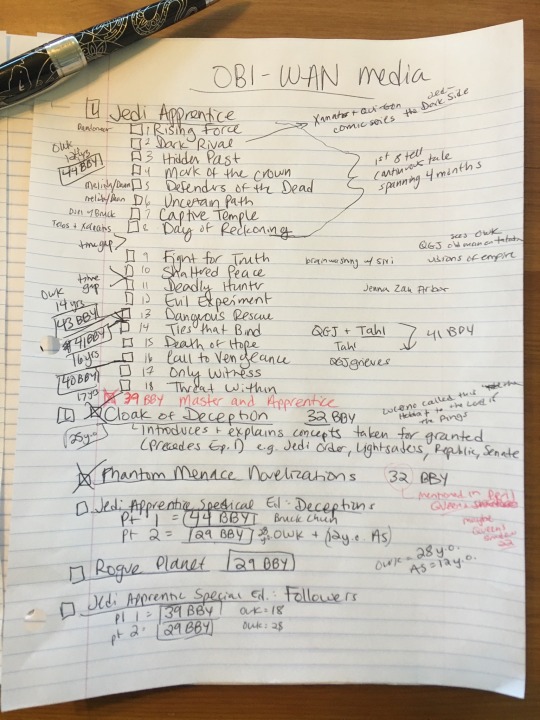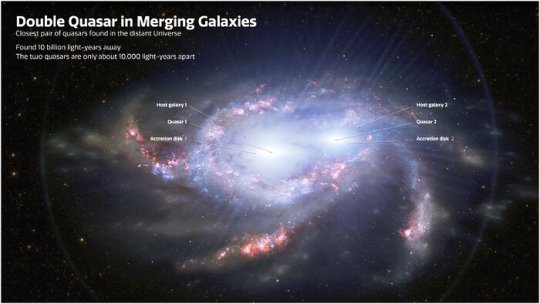#2.17 Distant Sun
Text







As long as you’re safe.
—Mon-El to Kara, Supergirl, “Distant Sun”
#Supergirl#Melissa Benoist#Kara Danvers#Mon-El#Chris Wood#Karamel#2.17 Distant Sun#Touching Hair | Kara and Mon-El#Hug | Kara and Mon-El#Foreheads Touching | Kara and Mon-El
169 notes
·
View notes
Photo



KARA DANVERS
SUPERGIRL, 2.17 - Distant Sun
#karadanversedit#supergirledit#dcedit#usermarissac#dcmultiverse#femalecharacters#dcfilmblr#usertelevision#cinematv#dcfilms#userladiesblr#dcblog#televisiongifs#dailyflicks#kara danvers#supergirl#dc#mine#my gifs#*
786 notes
·
View notes
Text
For anyone interested in stories about Obi-Wan Kenobi—I’ve compiled a chronological list of prequel-era books (Legends and Canon) where he appears. I also have a list of all his appearances in video at the end of the post behind a break bc I do try to respect peoples dashboards haha. I’m still working on figuring out the comics, but anyway here are the books:



It's probably not perfect, but it's better than nothing! I am definitely focused on the prequel era, bc that’s my area of expertise—the empire etc. is beyond me at the moment.
I know there are a sizable percentage of fans who dismiss anything that’s not in red ink as illegitimate characterization sources. I respectfully submit that it’s fun and interesting to have a character with a lot of memories and adventures.
Now, beneath the cut is a chronological list of his appearances in video (101 of them anyway):
Phantom Menace
Attack of the Clones
Chapter 1 (2003 Clone Wars)
Chapter 2
Chapter 3
Chapter 8
Chapter 9
Chapter 11
Chapter 19
Chapter 20
Chapter 21
Cat and Mouse (2.16)
The Hidden Enemy (1.16)
Clone Wars (2008)
Supply Lines (3.03)
Rising Malevolence (1.02)
Shadow of Malevolence (1.03)
Destroy Malevolence (1.04)
Rookies (1.05)
Downfall of a Droid (1.06)
Duel of the Droids (1.07)
Dooku Captured (1.11)
The Gungan General (1.12)
Trespass (1.15)
Blue Shadow Virus (1.17)
Mystery of a Thousand Moons (1.18)
Storm Over Ryloth (1.19)
Innocents of Ryloth (1.20)
Holocron Heist (2.01)
Children of the Force (2.03)
Bounty Hunters (2.17)
Zillow Beast Strikes Back (2.19)
Senate Spy (2.04)
Landing at Point Rain (2.05)
Legacy of Terror (2.07)
Brain Invaders (2.08)
Greivous Intrigue (2.09)
The Deserter (2.10)
The Mandalore Plot (2.12)
Voyage of Temptation (2.13)
Duchess of Mandalore (2.14)
Assassin (3.07)
ARC Troopers (3.02)
Hunt for Ziro (3.09)
Nightsisters (3.12)
Witches of the Mist (3.14)
Overlords (3.15)
Altar of Mortis (3.16)
Ghosts of Mortis (3.17)
The Citadel (3.18)
Counter Attack (3.19)
Citadel Rescue (3.20)
Gungan Attack (4.02)
Darkness on Umbara (4.07)
The General (4.08)
Plan of Dissent (4.09)
Kidnapped (4.11)
Slaves of the Republic (4.12)
Escape from Kadavo (4.13)
Deception (4.15)
Friends and Enemies (4.16)
The Box (4.17)
Crisis on Naboo (4.18)
Brothers (4.21)
Revenge (4.22)
A War on Two Fronts (5.02)
Front Runners (5.03)
The Soft War (5.04)
Tipping Points (5.05)
Bound for Rescue (5.08)
A Necessary Bond (5.09)
Secret Weapons (5.10)
Point of No Return (5.13)
Revival (5.01)
The Lawless (5.16)
Sabotage (5.17)
The Jedi Who Knew Too Much (5.18)
To Catch a Jedi (5.19)
The Wrong Jedi (5.20)
Conspiracy (6.02)
The Rise of Clovis (6.06)
The Disappeared, Part I (6.08)
The Lost One (6.10)
Voices (6.11)
Sacrifice (6.13)
A Death on Utapau (Unreleased)
In Search of the Crystal (Unreleased)
Crystal Crisis (Unreleased)
the Big Bang (Unreleased)
A Distant Echo (7.01)
Unfinished Business (7.04)
Chapter 22
Chapter 23
Chapter 25
Old Friends Not Forgotten (7.09)
The Phantom Apprentice (7.10)
Revenge of the Sith
Twin Suns (Rebels 3.20)
A New Hope
Empire Strikes Back
Return of the Jedi
#obi-wan kenobi#writing resources#idk if anyone actually wants or needs#this#but nevertheless i am sharing it#star wars#sw#i swear to god tumblr if you change my list again honestly wtf#it keeps deleting and replacing the first three of the list to be the same#ugh whatever#stupid tumblr or stupid molly whichever
130 notes
·
View notes
Photo



#supergirledit#karadanversedit#supergirl#dailycwsupergirl#kara danvers#mon el#kara x mon el#season 2#2.17#distant sun#*gifs#by josephine#spoilers
2K notes
·
View notes
Photo

Black Hole Pairs Found in Distant Merging Galaxies Gemini North spectroscopically resolves a pair of quasars that are closer together than any yet discovered in the distant Universe Astronomers have found two close pairs of quasars in the distant Universe. Follow-up observations with Gemini North spectroscopically resolved one of the distant quasar pairs, after their discovery with the Hubble Space Telescope and Gaia spacecraft. These quasars are closer together than any pair of quasars found so far away, providing strong evidence for the existence of supermassive black hole pairs as well as crucial insight into galaxy mergers in the early Universe. The quasars in each of the two pairs are separated by just over 10,000 light-years, suggesting that they belong to two merging galaxies [1]. Double quasars are scientifically interesting but rare objects — particularly in the most distant reaches of the Universe — and these are the most distant quasars found that are so close together. We see these quasar pairs as they existed roughly 10 billion years ago [2]. “We estimate that in the distant Universe, for every one thousand quasars, there is one double quasar. So finding these double quasars is like finding a needle in a haystack,” commented Yue Shen, an astronomer at the University of Illinois and lead author of the paper announcing this discovery. Quasars are the intensely bright cores of distant galaxies, powered by the feeding frenzies of supermassive black holes [3]. These energetic objects profoundly affect galaxy formation and evolution, making observations of quasar pairs in the early Universe a unique way for astronomers to investigate the evolution of merging galaxies. Quasar pairs also provide a natural laboratory in which to study the processes leading to the formation of binary supermassive black holes. “This truly is the first sample of dual quasars at the peak epoch of galaxy formation that we can use to probe ideas about how supermassive black holes come together to eventually form a binary,” elaborated team member Nadia Zakamska of Johns Hopkins University. Finding the two quasar pairs was a daunting challenge, requiring a new method that combined data from several space and ground-based telescopes, including the international Gemini Observatory, a Program of NSF’s NOIRLab. Quasar pairs at such large distances can only be resolved by sharp-eyed telescopes such as Hubble or Gemini, but observing time on these telescopes is too valuable to use it to sweep through large areas of the night sky in search of rare astronomical objects. To focus their search, the researchers first identified 15 quasars for further investigation using the Sloan Digital Sky Survey, a three-dimensional map of objects in the night sky. From this list of 15 quasars, they then used observations from the Gaia spacecraft to identify four potential quasar pairs [4]. Finally, these candidates were imaged with the Hubble Space Telescope, which visually resolved two quasar pairs, giving this novel method a success rate of 50%. The team then used the Gemini Multi-Object Spectrograph (GMOS) on Gemini North (located on Maunakea in Hawai‘i) to verify the discovery and further investigate one of the quasar pairs [5]. The combination of the sensitivity of GMOS and superb observing conditions allowed the team to resolve individual spectra from both quasars in the pair [6]. These spectra provided the team with independent measurements of the distance to the quasars and their composition, as well as confirming that the two quasars are indeed a pair rather than a chance alignment of a single quasar with a foreground star. “The Gemini observations were critically important to our success because they provided spatially resolved spectra to yield redshifts and spectroscopic confirmations simultaneously for both quasars in a double,” explained Yu-Ching Chen, a graduate student at the University of Illinois who is on the discovery team. “This method unambiguously rejected interlopers due to chance superpositions such as from unassociated star-quasar systems.” While the team members are confident in their discovery, there is a small possibility that they have actually observed double images of single quasars. These astronomical doppelgängers can be formed by gravitational lensing, which occurs when an intervening massive galaxy distorts and splits the light from a distant object, often resulting in multiple images of that object. The researchers are convinced that this is highly unlikely, however, as they could not detect any foreground galaxies in their observations. With their method successfully demonstrated, the researchers now plan to search for more quasar pairs, building up a census of double quasars in the early Universe. “This proof of concept really demonstrates that our targeted search for dual quasars is very efficient,” concluded Hsiang-Chih Hwang, a graduate student at John Hopkins University and the principal investigator of the Hubble observations. “It opens a new direction where we can accumulate a lot more interesting systems to follow up, which astronomers weren’t able to do with previous techniques or datasets.” “This exciting investigation illustrates yet again the discovery potential of combining archived survey data with new, focused observations from state-of-the-art facilities,” said Martin Still, Gemini Program Officer at NSF. “The international Gemini Observatory proved to be the ideal instrument to confirm the identity of these black holes and characterize their environment.” Notes [1] By comparison, our home galaxy, the Milky Way, is around 100,000 light-years across. [2] Distance and time are entwined in astronomy. The farther away astronomical objects are, the longer it takes for their light to reach us on Earth. In the Solar System, for example, it takes sunlight just over 8 minutes to reach Earth, meaning we see the Sun as it was 8 minutes ago. On a far grander scale, we can observe distant galaxies as they were billions of years ago — offering astronomers a window onto the early Universe. One pair of quasars has a redshift of 2.17, and the pair that Gemini spectroscopically resolved has a redshift of 2.95. [3] As these black holes consume infalling matter from their surroundings, they produce an intense torrent of radiation across the electromagnetic spectrum. The amount of energy released is enormous, enough to outshine entire galaxies, and makes quasars bright beacons in the night sky. [4] The European Space Agency’s Gaia spacecraft measures the positions and distances of astronomical objects with painstaking precision. Gaia measures how the positions of stars subtly shift as Earth orbits the Sun, an effect known as parallax. Distant quasars are much too far from Earth to have measurable parallaxes, but the researchers realized that quasar pairs could mimic the motion of nearby stars. While these quasar pairs appear to be single points in the Gaia data, random fluctuations in the brightness of each quasar could make the pair resemble a nearby star “jiggling” from side to side. Identifying quasars with this apparent jiggling motion provided the team with a list of quasar pair candidates for further investigation with Hubble. [5] The Gemini observations were awarded through Director’s Discretionary Time (DDT), a small portion of observing time that is reserved for testing new methods or responding to unexpected astronomical events. DDT can also be used for high-risk, high-reward observations — such as the ones in this discovery. [6] The emission spectrum of an astronomical object is a measure of how intensely the object emits light at different wavelengths. This can provide astronomers with insights into the properties of an object, such as its chemical composition, mass, temperature, and distance.
4 notes
·
View notes
Photo

Supergirl - Episode 2.17 - Distant Sun - Promo, Inside The Episode, Interview, Promotional Photos & Press Release http://www.spoilertv.com/2017/03/supergirl-episode-217-distant-sun-press.html
1 note
·
View note
Photo








Kara Danvers in Season 2: Distant Sun (2.17)
#kara danvers#melissa benoist#kara zor el#supergirl#j'onn j'onzz#dc#my edit#edits#karas2#supergirls2
32 notes
·
View notes
Photo






Winn and Mon-El in Supergirl 2.17 “Distant Sun”
2K notes
·
View notes
Text







You came after me.
Every time.
—Mon-El and Kara, Supergirl, “Distant Sun”
#Supergirl#Melissa Benoist#Kara Danvers#Mon-El#Chris Wood#Karamel#Hug | Kara and Mon-El#2.17 Distant Sun
85 notes
·
View notes
Photo


Supergirl 2.17 - Distant Sun Stills [x]
989 notes
·
View notes
Photo


Stills de Supergirl 2.17 “Distant Sun”
More
#Supergirl#SupergirlCW#alex danvers#alexdanvers#sanvers#maggie sawyer#Chyler Leigh#floriana lima#supergirl 2.17
144 notes
·
View notes
Photo


Mon-El in 2.17 “Distant Sun”
104 notes
·
View notes
Photo



#supergirledit#karadanversedit#kara danvers#dailycwsupergirl#karazorelgifs#kara zor el#season 2#2.17#distant sun#*gifs#by josephine#spoilers
2K notes
·
View notes
Photo








Inside Supergirl 2.17 "Distant Sun" (Part 2)
(x)
52 notes
·
View notes
Photo





Distant Sun, Supergirl, 2.17
24 notes
·
View notes
Photo






SUPERGIRL - 2.17 DISTANT SUN
1920X1080 | .jpg | logofree | 2,608 screencaps | sorted
gallery :: download
- PLEASE LIKE/REBLOG IF TAKING!
- credit genrecaps.tumblr.com or genrecaps.net
- zip files are in .doc form. if you need help changing the extension go here
#supergirl#supergirledit#melissa benoist#mehcad brooks#chyler leigh#david harewood#floriana lima#jeremy jordan#chris wood#teri hatcher#kevin sorbo
13 notes
·
View notes